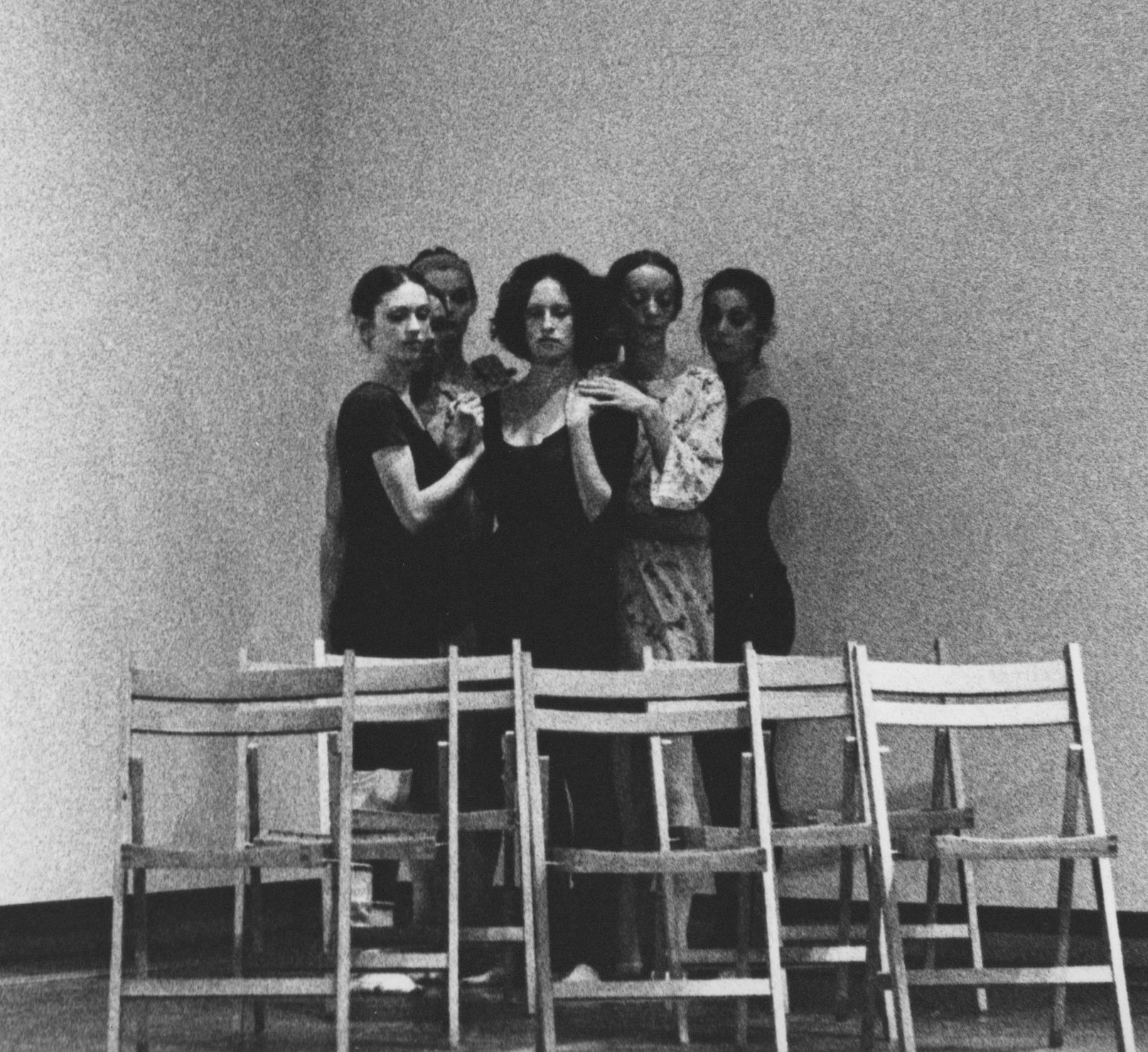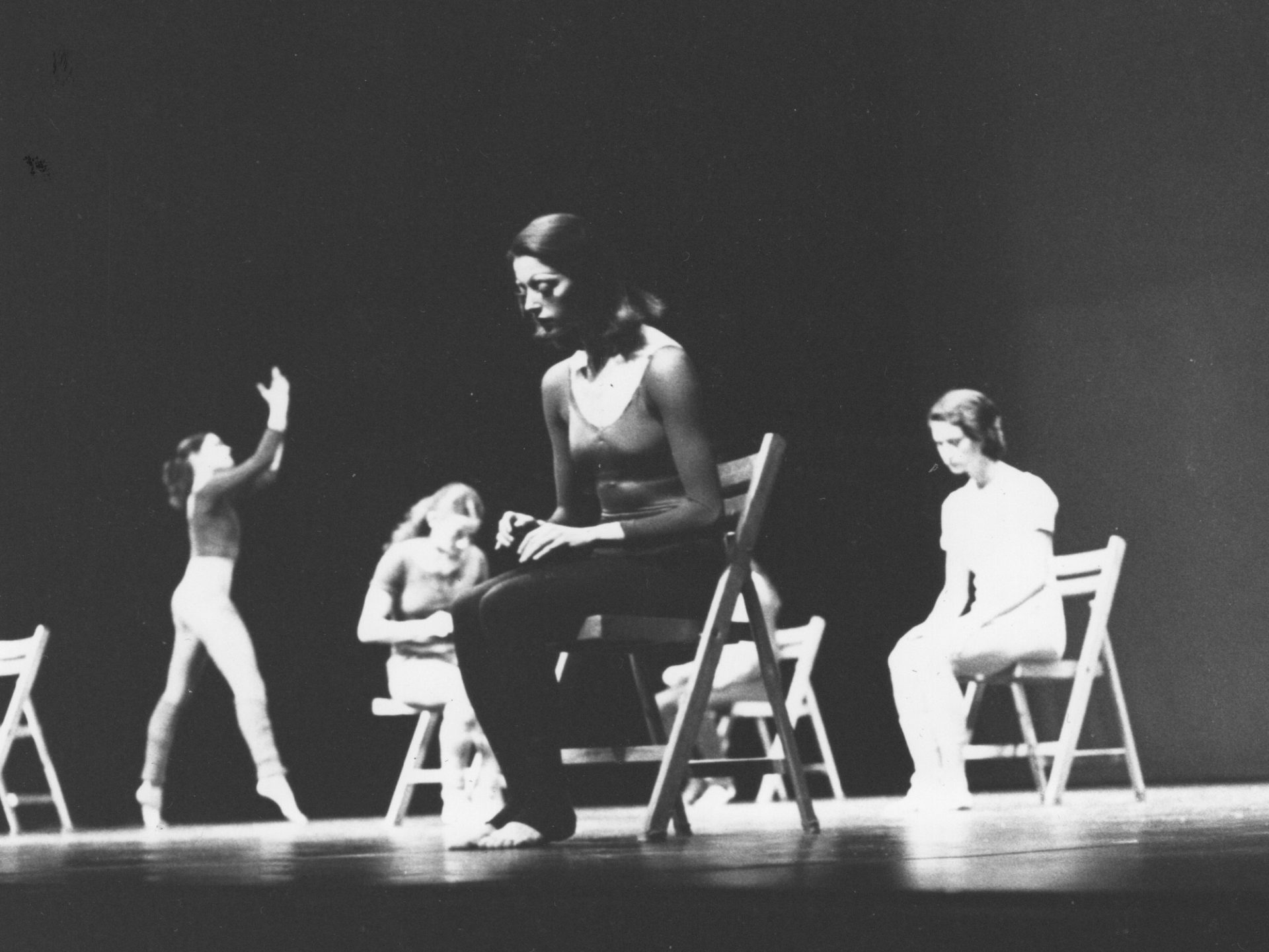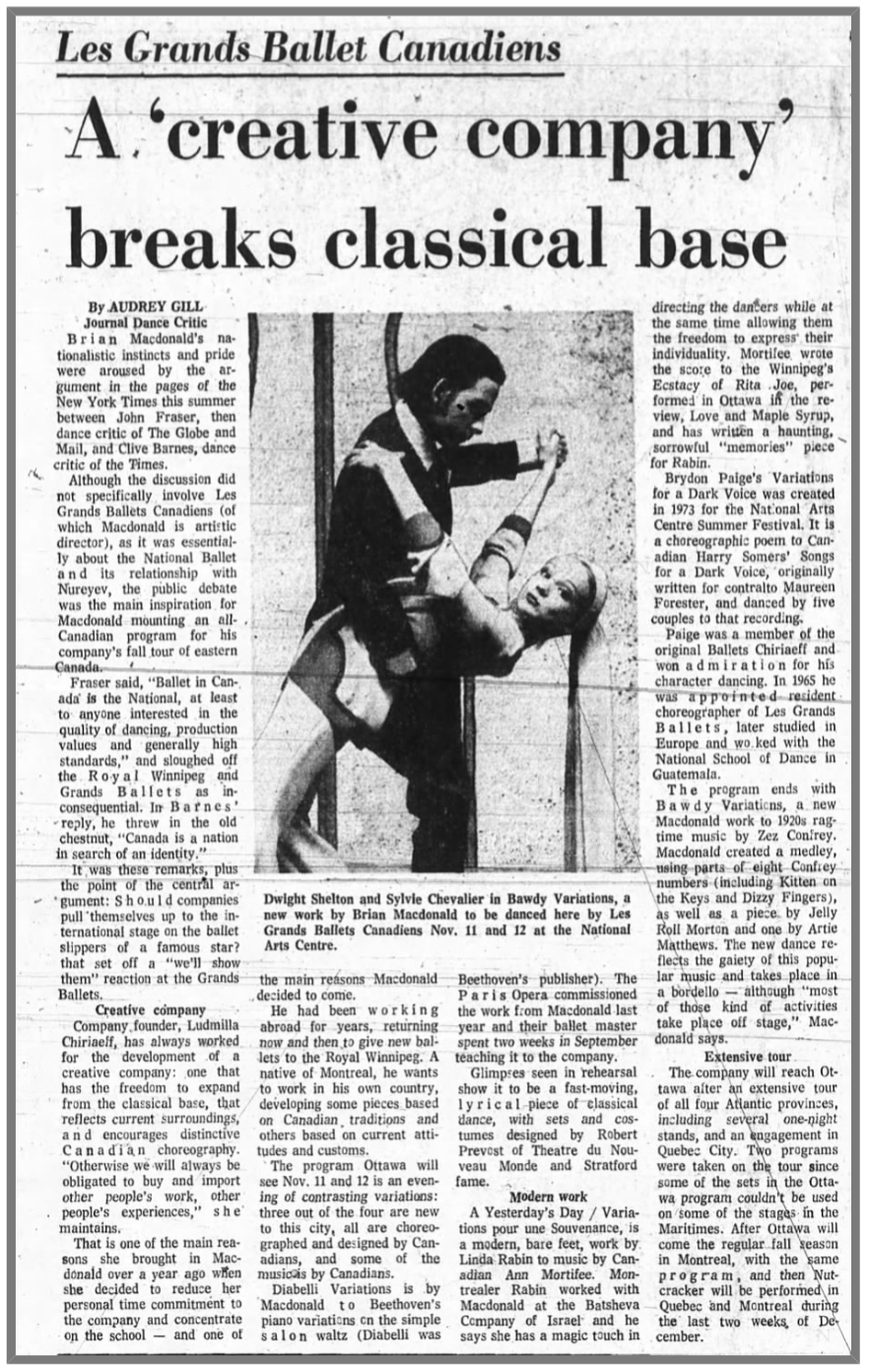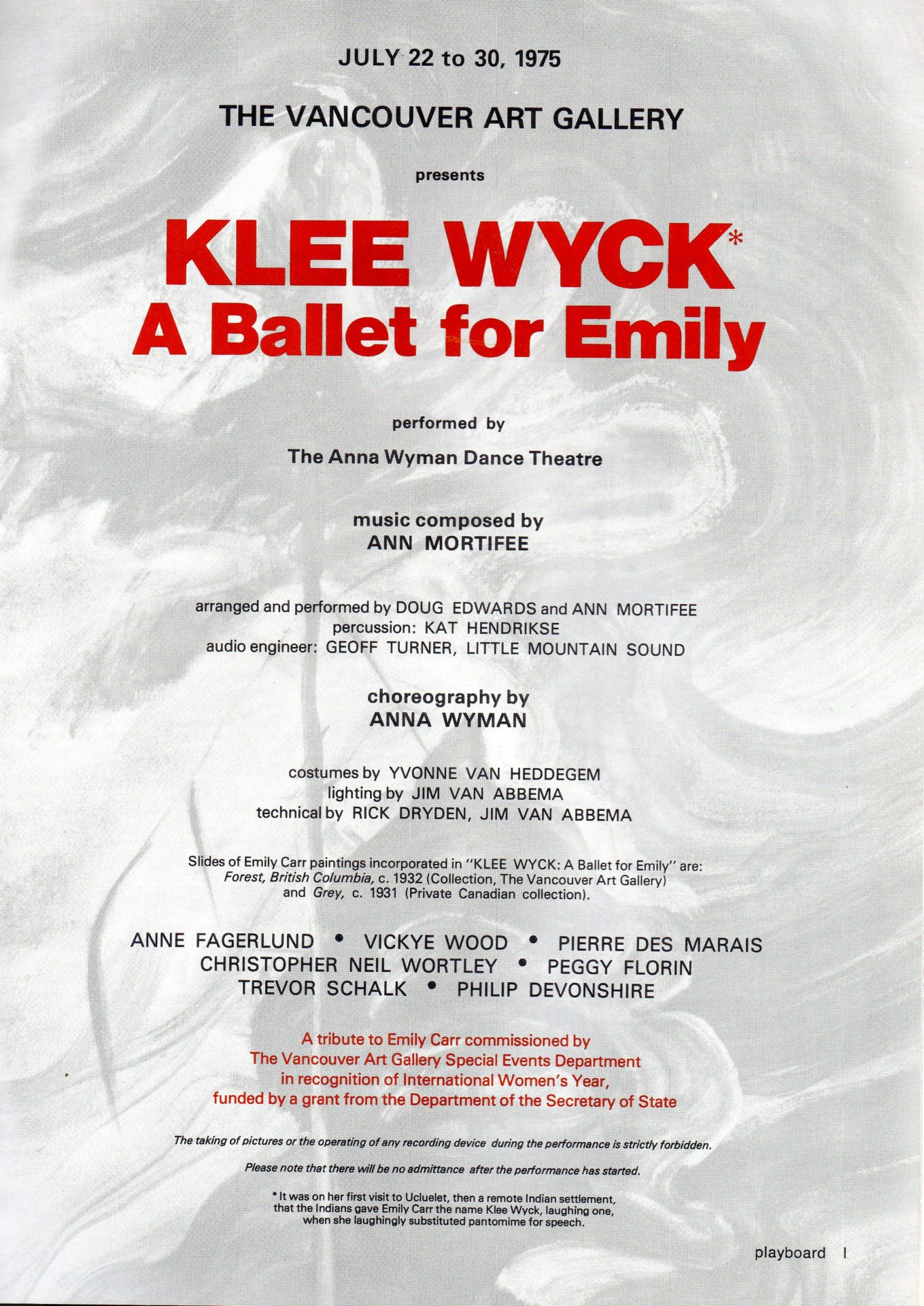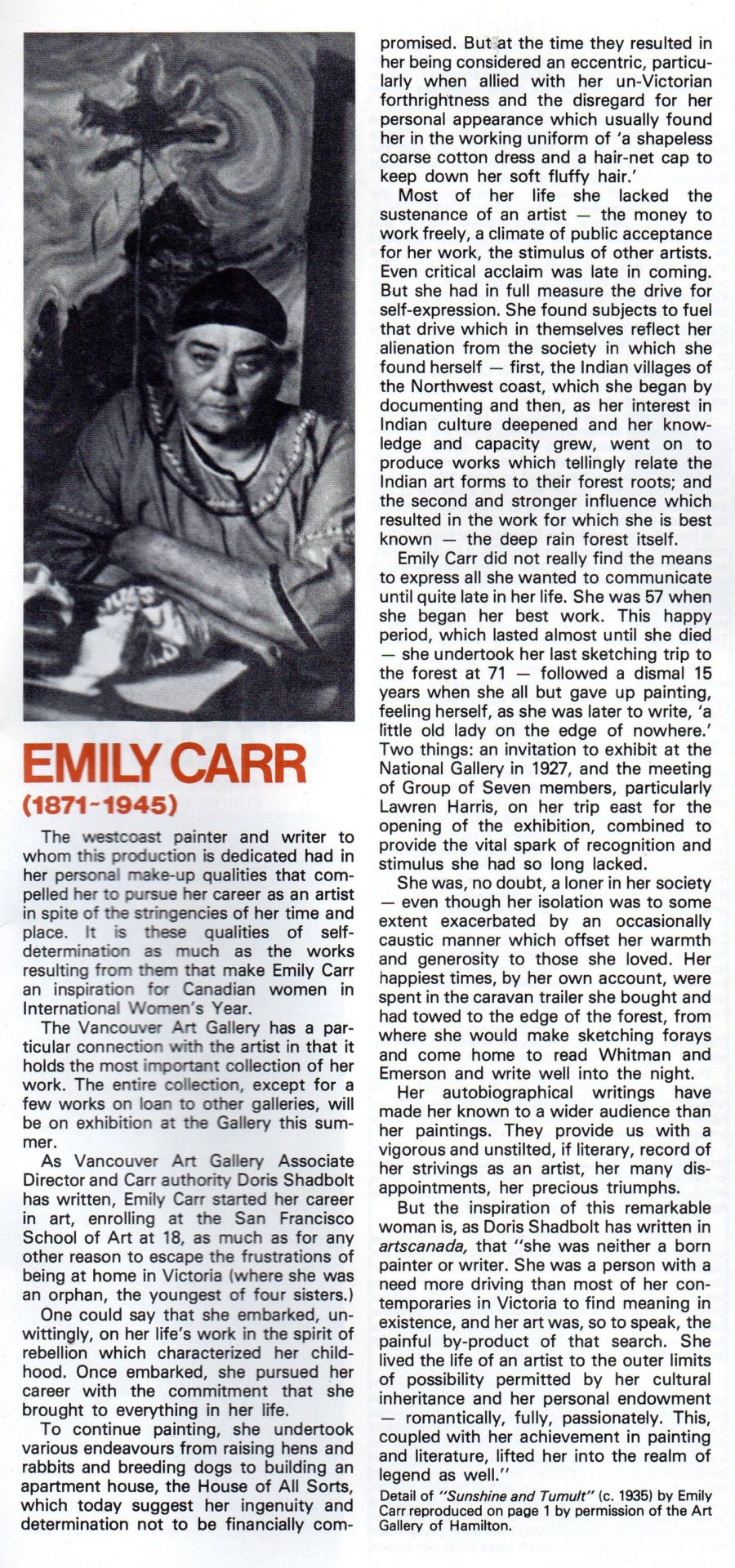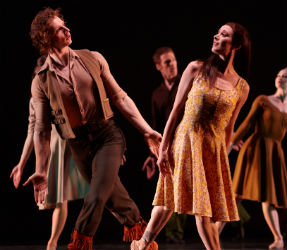“I love writing music and lyrics because they keep me growing and discovering what really matters.”
ROSE IS A ROSE
Canadian Opera Company General Manager Lofti Mansuri commissioned Ann Mortifee to write Rose is a Rose, an opera for children about the travails of early adolescence. Performed by the COC’s Ensemble Studio, Rose is a Rose had its world premiere at the Joey and Toby Tanenbaum Opera Centre’s Texaco Opera Theatre, Toronto.
Composer and Librettist – Ann Mortifee
“This is an enchanting little show, a virtually non-stop succession of instantly hummable songs, dances and ensemble numbers … Mortifee has delivered the goods. Using the musical language of ballads, rhythm and blues, country and western music, soft rock and even bebop, she has fashioned a bridge between the pop world young people know and the theatrical world to which opera belongs.” – William Littler, Toronto Star Opera Reviewer
Canadian Opera Company General Manager, Lofti Mansuri, was passionate about promoting young talent. Under his leadership, the COC Ensemble Studio was launched. It is now Canada’s premier training program for young opera professionals, and has a robust touring program that brings children’s operas to schools.
Another of Lofti Mansuri’s many legacies was the introduction of projected subtitles (translated into English) above the stage so that audiences could follow the libretto (words).
Canadian Mezzo-Soprano Kimberly Barber, a young opera student when she performed in Rose is a Rose, had this recollection of Lofti Mansuri:
“He was like a father figure to many, including me. I performed my very first Komponist with him, Mikado, Magic Flute, Tales of Hoffman, and the world premiere of Ann Mortifee’s Rose is a Rose. Every time he saw me he would say, “I always remember you. You were my Rose”.
A YESTERDAY'S DAY
A Yesterday’s Day / Variations pour une Souvenance (Movements for a Remembrance) was a modern ballet produced and choreographed for Les Grands Ballet Canadiens by Linda Rabin.
Rabin was a Juilliard School of Music graduate, who had taught dance in the USA, Europe and Israel. Brian Macdonald, the artistic director for Les Grands Ballet Canadiens at that time had worked with Rabin at the Betsheva Company of Israel. He invited her to do a summer choreographic workshop with the ballet company, as he believed that she had a magic touch in directing dancers, while at the same time allowing them the freedom to express their individuality.
In the dance that Rabin developed that summer, seven women in bare feet wearing practice clothes pushed seven chairs across the stage.
The dance was successful enough to become one of four dances in the company’s repertoire for the fall/spring season. All four dances that season had the word ‘variations’ included in their titles. The word ‘souvenance’ in English means ‘recollection’ or ‘remembrance’.
Funding was provided by the Canada Council, which had a mandate at that time to develop Canadian choreographers and increase the number of contemporary works (modern dance) pieces into the repertoires of ballet companies. Variations pour une Souvenance/A Yesterday’s Day was performed at Place des Arts in Montreal, along with Quebec City and Ottawa, and it toured extensively in Atlantic Canada.
Musical Score by Ann Mortifee
‘Modern Sculpture in Motion’ Outshines Fine GBC Program
Linda Rabin’s brilliant A Yesterday’s Day so far outdistanced the other three ballets presented Friday night when Les Grands Ballets Canadiens launched its new season, that it is difficult to recall exactly what else was on the program. This is not to say the company performed badly: on the contrary, it danced better than it ever has. But Rabin, the young Montreal-born choreographer, presented a work of major importance for both herself, the company, and Canadian ballet.
The work, set to music by Canadian composer Ann Mortifee – who was applauded by the ballet world with her music for The Ecstasy of Rita Joe – was the second on the program of variations . . . watching it was like witnessing a nervous breakdown. It was a modern sculpture in motion, so exciting is Rabin’s sense of space.
Linde Howe-Beck, The Gazette
Mortifee has written a haunting, sorrowful ‘memories’ piece for Rabin.
Audrey Gill, Ottawa Journal Dance Critic
KLEE WYCK, A BALLET FOR EMILY
Emily Carr, Canada’s legendary painter and author, was greatly respected by BC`s coastal First Nations, who gave her the honourary name, Klee Wyck (Laughing One).
Anna Wyman headed a prolific modern dance ensemble and she created the dance as a tribute to Emily Carr. The dance interpreted moods of peace, power, stillness and mediation inspired by Carr`s works. It premiered at the Vancouver Art Gallery, and performances ran for one week. It also aired as a CBC special. Ann`s multi-layered musical score was composed for synthesizer, guitar, piano, drums, percussion and voice.
(From LITERARY VERSIONS OF EMILY CARR by Eva-Marie Kröller, Canadian Literature No. 109, Summer 1986:) …”Interestingly, a ballet, commissioned for performance during 1975, the International Women’s Year, avoids all reference to Carr’s struggle against the patriarchal figures in her life but strongly alludes to her explorations of Indian cosmology as rites of passage toward creativity and selfhood.
Choreographed by Anna Wyman, with music scored for synthesizer, guitar, piano, drums, percussion, and voice by Ann Mortifee, Klee Wyck: A Ballet for Emily was first performed in the old Vancouver Art Gallery, with slides of Carr’s work projected onto two side walls and onto a transparent screen erected between audience and stage. Props and costumes suggested resemblances with both Indian and Carr’s own art without attempting to imitate either; thus, the performing area contained a tent-like structure serving as a teepee or as the triangular vortex at the centre of Carr’s “Grey” and other paintings.
The costumes were designed in earthy colours occasionally patterned in ritualist motifs. No attempt was made to establish a plot; like Voaden and McNeil, Anna Wyman relied on leitmotifs to create “a series of seemingly unrelated scenes and sequences” nevertheless held together by recurrent movements, “a slow passing of the flat hand down before the face, for instance ; a high and forceful thrust of the right leg with the foot flexed.”
An earlier piece of music, Harry Freedman’s Klee Wyck 94 CARR (1971), also concentrates on Carr’s involvement with Indian culture, but unlike Mortifee’s music, it does attempt to imitate painting in programmatic music.”
Musical Score by Ann Mortifee
The ballet was commissioned by the Vancouver Art Gallery in recognition of the United Nations` International Women`s Year, and was funded with a $25,000 grant from the Department of the Secretary of State. The three women who made it happen, Dorothy Metcalfe, who conceived it, Anna Wyman, who choreographed it, and Ann Mortifee, who scored it, were prominent in Vancouver’s activism and arts communities.
THE GREY GOOSE OF SILENCE
Norbert Vesak, an internationally acclaimed Canadian dancer and choreographer, acting as guest choreographer for the North Carolina Dance Company, commissioned Ann to compose the music for new full length ballet.
The Grey Goose of Silence was a contemporary ballet about the inhabitants of the mythical town of Silence, which was located somewhere in the Appalachian mountains of North Carolina. It was a story of love and change set in an atmosphere of indifference and brutality. In one of the scenes, people danced at a waterfall, so Ann incorporated the sound of a waterfall into the musical score.
Musical Score by Ann Mortifee
Years after the world premiere of The Grey Goose of Silence, Norbert Vesak was invited to the North Carolina Dance Company’s 20th anniversary celebration. The company was re-staging its seminal ballet, The Grey Goose of Silence, for the occasion. Tragically, Mr. Vesak died of a brain aneurysm while enroute to the performance.
THE ECSTASY OF RITA JOE
The Manitoba Indian Brotherhood commissioned the Royal Winnipeg Ballet Company to transform a stage play, The Ecstasy of Rita Joe, which Ann had appeared in and co-written the music for, into a full-length dance.
Choreographer Norbert Vesak invited Ann to compose the ballet’s musical score and to sing during the performances.
Musical Score by Ann Mortifee
Singing: Ann Mortifee
“The best ballet of the year, in terms of its social importance to Canadians.” – William Littler, Toronto Daily Star
The original Ecstasy of Rita Joe stage play was the first production to touch on the shameful treatment of Canada’s First Nations peoples. In 2016, the Royal Winnipeg Ballet produced an original full-length dance called The Going Home Star, about the tragic impact and legacy of Canada’s residential schools.
Excerpt from The Going Home Star program notes:
Going Home Star is not the first time the Royal Winnipeg Ballet has used dance to showcase an aboriginal story that needed to be told. In 1971, then artistic director Arnold Spohr premiered The Ecstasy of Rita Joe, which traced an indigenous woman’s demise on mean city streets. Based on George Ryga’s play, with music by Ann Mortifee and Paul Horn and voice-overs by Chief Dan George, it was a game-changer for dance fans of that generation.
Both current RWB artistic director Andre Lewis, and Going Home Star choreographer Mark Godden danced in The Ecstasy of Rita Joe.
“When I am asked what the most significant ballet was that I danced in, I always say The Ecstasy of Rita Joe. I can still hear Chief Dan George’s voice at the end: ‘the concrete made her feet hurt,’” says Lewis. “Things have changed since then, and not changed. In a way, Going Home Star is the precursor to The Ecstasy of Rita Joe, in that Ecstasy was about the social and personal destruction caused by residential schools.”


